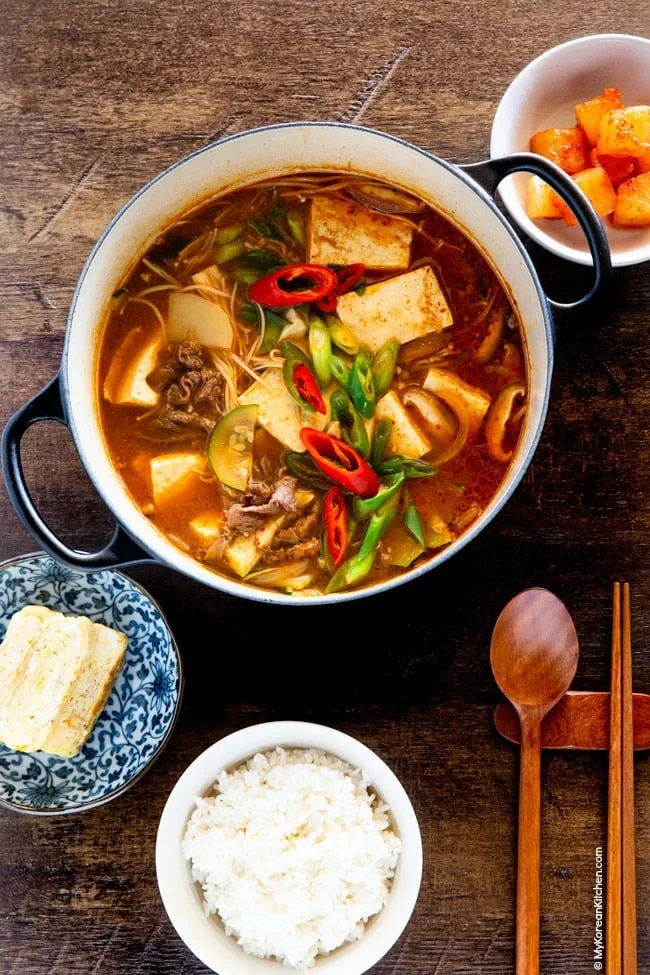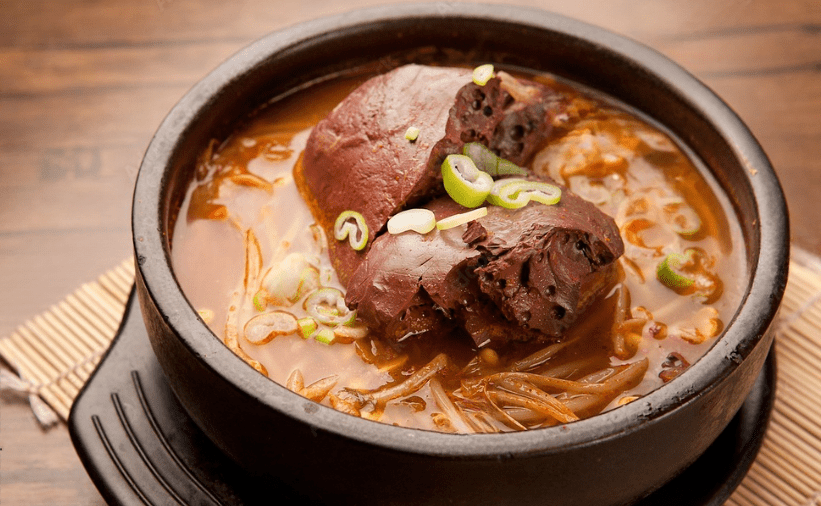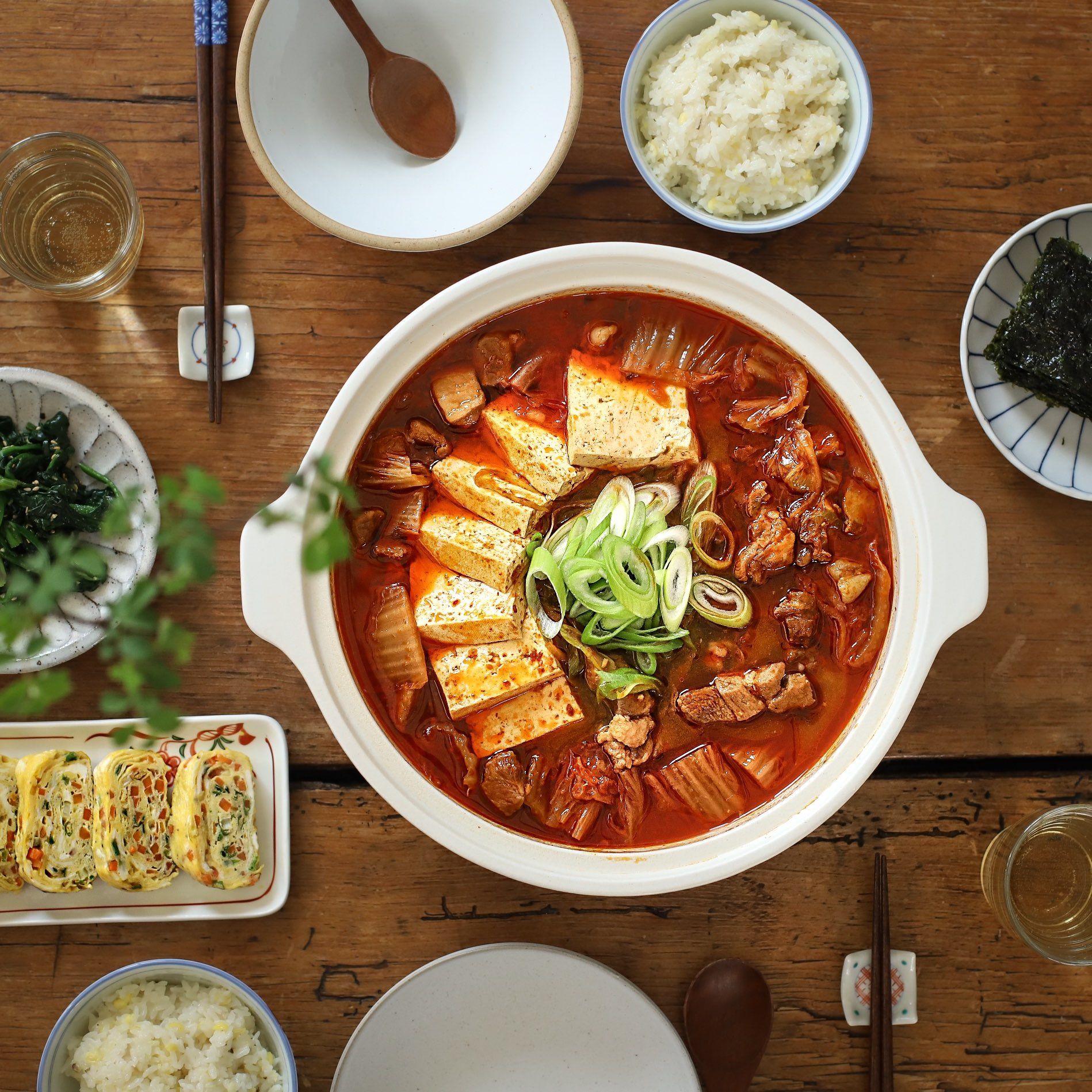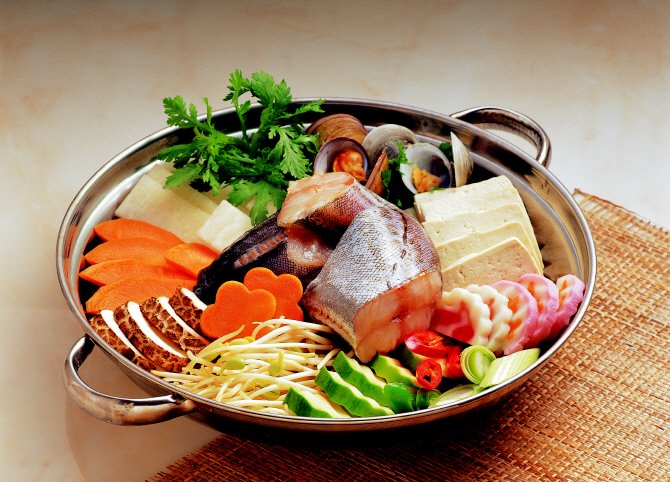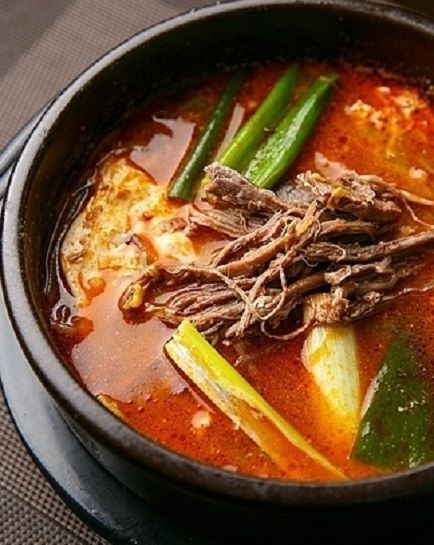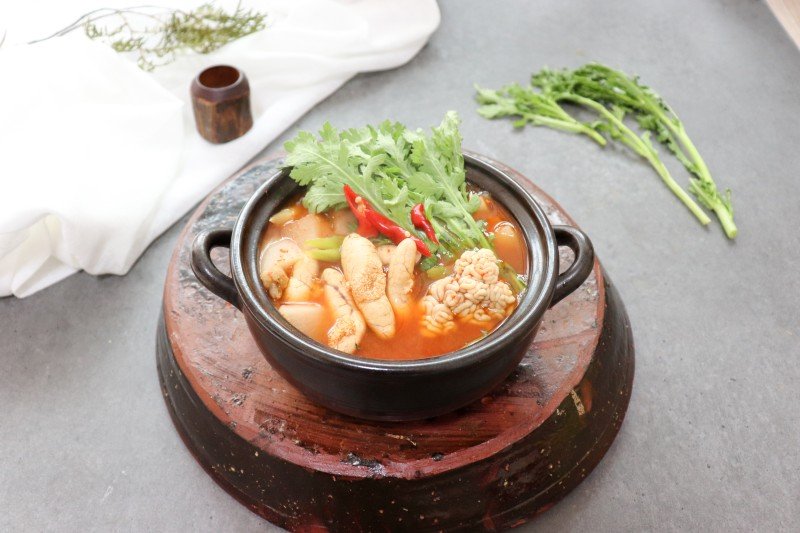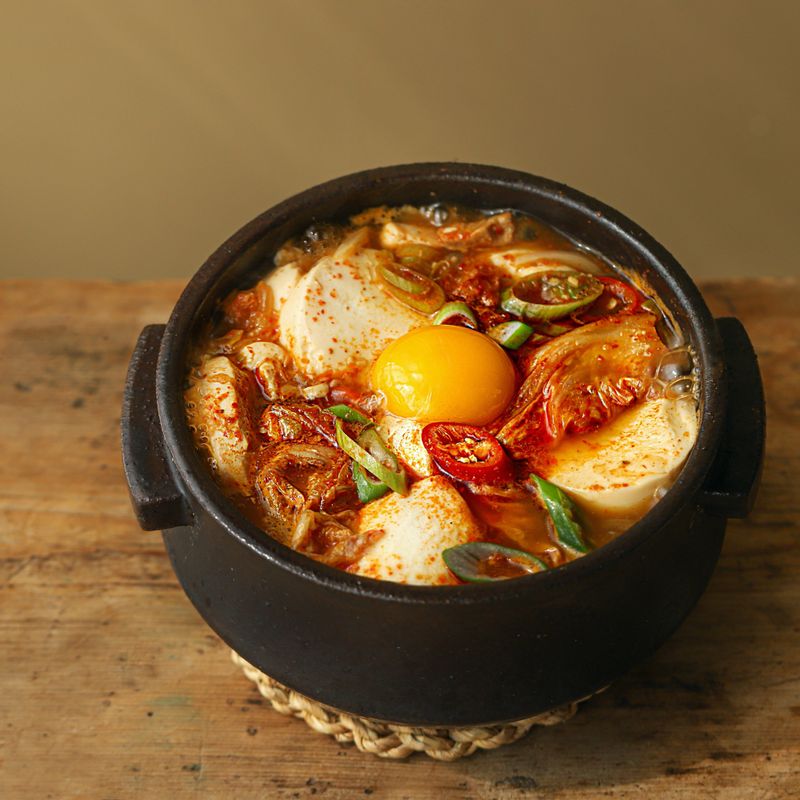된장찌게 Doenjang Jjigae
된장찌게
된장찌게, also known as soybean paste stew, is a traditional Korean dish that holds a significant place in Korean cuisine. It is a hearty and flavorful stew made with various ingredients and a base of fermented soybean paste called "doenjang." This stew is beloved for its rich, savory flavors and unique aroma.
Doenjang, the main component of 된장찌게, is a thick and salty paste made from fermented soybeans. It has a distinctive aroma and a slightly sweet and nutty flavor. Doenjang is an essential ingredient in Korean cooking and is commonly used as a base for soups and stews.
To prepare 된장찌게, various ingredients are added to enhance the flavor and texture. The most common ingredients include tofu, vegetables (such as zucchini, mushrooms, onions, and garlic), seafood (such as clams, shrimp, or squid), and sometimes beef or pork. The ingredients used may vary depending on personal preferences and regional variations.
The stew is typically cooked in a large pot, where the combination of ingredients creates a harmonious blend of flavors. The savory and umami-rich taste of doenjang infuses throughout the stew, creating a robust and comforting dish. The stew is usually served piping hot and enjoyed with a bowl of steamed rice and various side dishes, such as kimchi and pickled vegetables.
Aside from its delicious taste, 된장찌게 is also known for its nutritional value. The fermented soybean paste, doenjang, is packed with proteins, vitamins, and minerals, making it a healthy addition to one's diet. Along with the various vegetables and protein sources, this stew provides a well-rounded and nutritious meal option.
In Korean culture, 된장찌게 holds a special place as a staple comfort food. It is frequently enjoyed during colder months, as the warm and hearty nature of the stew helps keep individuals warm and cozy. It is often prepared at home and enjoyed with family and friends, making it a social and communal dish.
Overall, 된장찌게 is a quintessential Korean dish that showcases the country's rich culinary heritage. Its unique blend of flavors, nutritional benefits, and cultural significance all contribute to its popularity both within Korea and internationally. Whether enjoyed at a traditional Korean restaurant or prepared at home, 된장찌게 is a dish that offers a satisfying and immersive dining experience.
